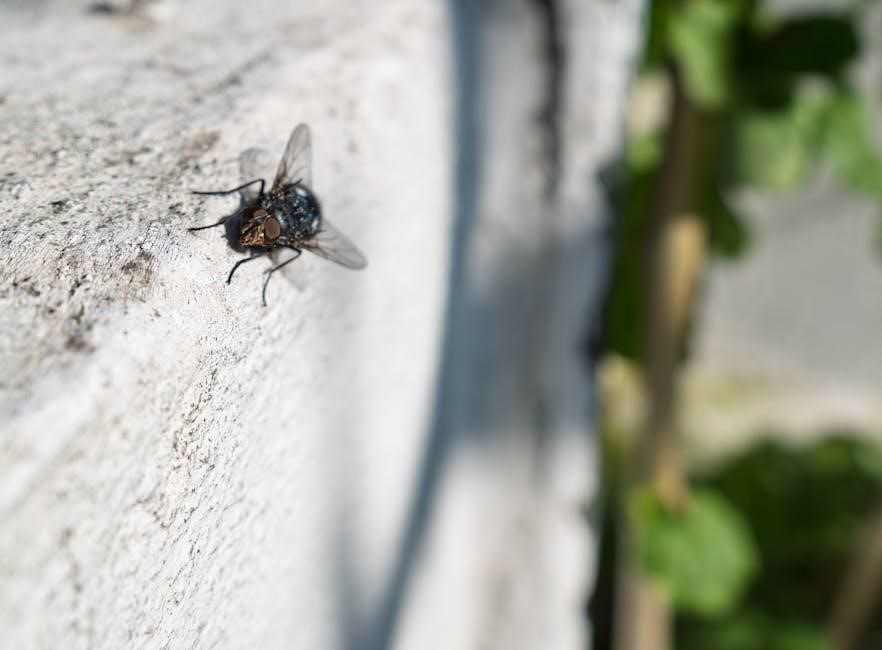The Bug-In Guide provides a comprehensive manual for home defense and survival strategies in crisis situations using expert insights from elite fighting forces and time-tested methods effectively.
Definition and Importance
The concept of bugging in refers to the practice of staying in a secure location, typically one’s home, during a crisis or emergency situation. This approach is often preferred over bugging out, which involves leaving one’s home to seek safety elsewhere. The importance of bugging in lies in its ability to provide a sense of security and stability, allowing individuals to protect themselves and their loved ones from potential threats. By understanding the definition and significance of bugging in, individuals can better prepare themselves for emergency situations and make informed decisions about their safety and well-being. Effective bugging in requires careful planning, preparation, and a thorough understanding of the potential risks and challenges involved, making it a crucial aspect of emergency preparedness and survival strategies. Overall, bugging in is a vital concept that can help individuals navigate uncertain situations.
Benefits of Bugging In
Enhanced safety and security measures are implemented effectively always.
Security and Safety
The Bug-In Guide emphasizes the importance of security and safety measures in crisis situations, providing individuals with the knowledge to protect themselves and their loved ones effectively. A well-planned bug-in strategy includes securing the home, storing essential supplies, and being prepared for potential threats. The guide offers expert advice on how to create a safe and secure environment, including tips on home fortification, emergency communication, and self-defense. By following these guidelines, individuals can significantly enhance their security and safety, reducing the risk of harm and increasing their chances of survival. Effective security and safety measures are crucial in a bug-in situation, and the guide provides comprehensive information on how to achieve this. The goal is to create a secure sanctuary that provides protection and comfort during a crisis.

Preparing for Bug-In
Preparation is key to a successful bug-in, requiring a thorough plan and essential supplies to ensure safety and comfort during a crisis situation effectively always.
Essential Supplies and Resources
To effectively bug-in, it is crucial to have the necessary supplies and resources. This includes a sufficient amount of non-perishable food, water, and medical equipment. A bug-in checklist can help individuals determine what essentials they need to stockpile. Having a plan and being prepared can make a significant difference in ensuring safety and comfort during a crisis. The Navy SEALs Bug-In Guide provides valuable insights and expertise on what supplies are essential for a successful bug-in. By following this guide, individuals can ensure they have the necessary resources to protect themselves and their loved ones. A well-stocked pantry, a reliable source of water, and a first aid kit are just a few examples of the essential supplies needed for a bug-in. With the right resources, individuals can confidently prepare for any situation. Proper planning is key to a successful bug-in experience always.

Types of Bug-In Scenarios
Different scenarios require unique plans and strategies for effective bugging in always using various methods and techniques effectively every time.
Threats and Stages of Planning
Understanding the various threats and stages of planning is crucial for effective bugging in, as it enables individuals to prepare and respond accordingly. The planning process involves identifying potential threats, assessing risks, and developing strategies to mitigate them. This includes considering factors such as food, water, and medical supplies, as well as communication and defense systems. By breaking down the planning process into stages, individuals can create a comprehensive plan that addresses their specific needs and circumstances. Effective planning also involves staying informed about potential threats and being prepared to adapt to changing situations. This requires a flexible and proactive approach, with a focus on continuous learning and improvement. By taking a thorough and structured approach to planning, individuals can ensure their safety and well-being in a bug-in scenario. This is essential for surviving and thriving.
Expert Insights and Strategies
Former Navy SEAL Joel Lambert shares expert guidance on bugging in and home defense strategies effectively using proven methods and techniques always.
Former Navy SEAL Joel Lambert’s Guidance
Joel Lambert, a former Navy SEAL, provides valuable guidance on bugging in and home defense, drawing from his extensive experience in combat zones. His expertise is based on real-world scenarios, making his advice highly relevant and effective. Through his guidance, individuals can learn how to transform their homes into secure sanctuaries, equipped to handle various crisis situations. Lambert’s approach emphasizes the importance of preparedness, situational awareness, and strategic planning. By following his guidance, people can significantly enhance their ability to respond to emergencies and protect their loved ones. His insights are particularly useful for those seeking to develop a comprehensive bug-in strategy, tailored to their specific needs and circumstances, and to increase their overall sense of security and well-being in uncertain times. His expertise is a valuable resource for anyone interested in home defense and survival.

Comparison to Bugging Out
Bugging in requires more resources than bugging out for effective emergency planning and execution always.
Resource Requirements and Mobility
The resource requirements for bugging in are significantly higher than those for bugging out, as it involves stocking up on essential supplies and resources to sustain oneself for an extended period. This includes food, water, medical supplies, and communication equipment, among other things. In terms of mobility, bugging in requires a more static approach, where one remains in a fixed location, whereas bugging out involves being more mobile and able to move quickly and easily. The choice between bugging in and bugging out ultimately depends on the individual’s circumstances and the nature of the emergency situation. A thorough understanding of the resource requirements and mobility considerations is crucial in making an informed decision. Effective planning and preparation are key to ensuring a successful bug-in or bug-out experience. Various factors must be taken into account when deciding which approach to take.

Historical Context and Lifestyle
People have adopted the bug-in lifestyle for thousands of years, with many continuing to practice it today, often due to various external factors and circumstances effectively always.
Adoption and Practice
The adoption and practice of bug-in strategies have become increasingly popular in recent years, with many individuals and families incorporating these methods into their daily lives. This can be attributed to various factors, including the COVID-19 pandemic, which has led to a significant increase in people adopting a bug-in lifestyle. As a result, many have begun to stockpile essential supplies and resources, and have developed plans for emergency situations. The practice of bug-in has also been influenced by historical events, with people drawing from past experiences to inform their decision-making. Overall, the adoption and practice of bug-in strategies have become an essential aspect of modern life, allowing individuals to be better prepared for unexpected events and crises. Many people have successfully implemented these strategies, and have reported feeling more secure and self-sufficient as a result. Effective planning is key to success.
and Recommendations
The Bug-In Guide concludes with actionable recommendations for effective home defense and survival strategies implementation always.
Final Thoughts and Next Steps
To further enhance home defense and survival capabilities, individuals can explore additional resources and training programs, such as online courses or workshops, to gain practical experience and knowledge.
By taking proactive steps and staying informed, individuals can effectively prepare for and respond to crisis situations, ensuring the safety and well-being of themselves and their loved ones.
The key to successful implementation of the Bug-In Guide is to remain vigilant, adaptable, and committed to continuous learning and improvement, ultimately leading to a more secure and resilient living environment.
Effective preparedness and planning can make a significant difference in emergency situations, and the Bug-In Guide provides a valuable foundation for achieving this goal.
Overall, the Bug-In Guide offers a comprehensive and practical approach to home defense and survival, empowering individuals to take control of their safety and security.


